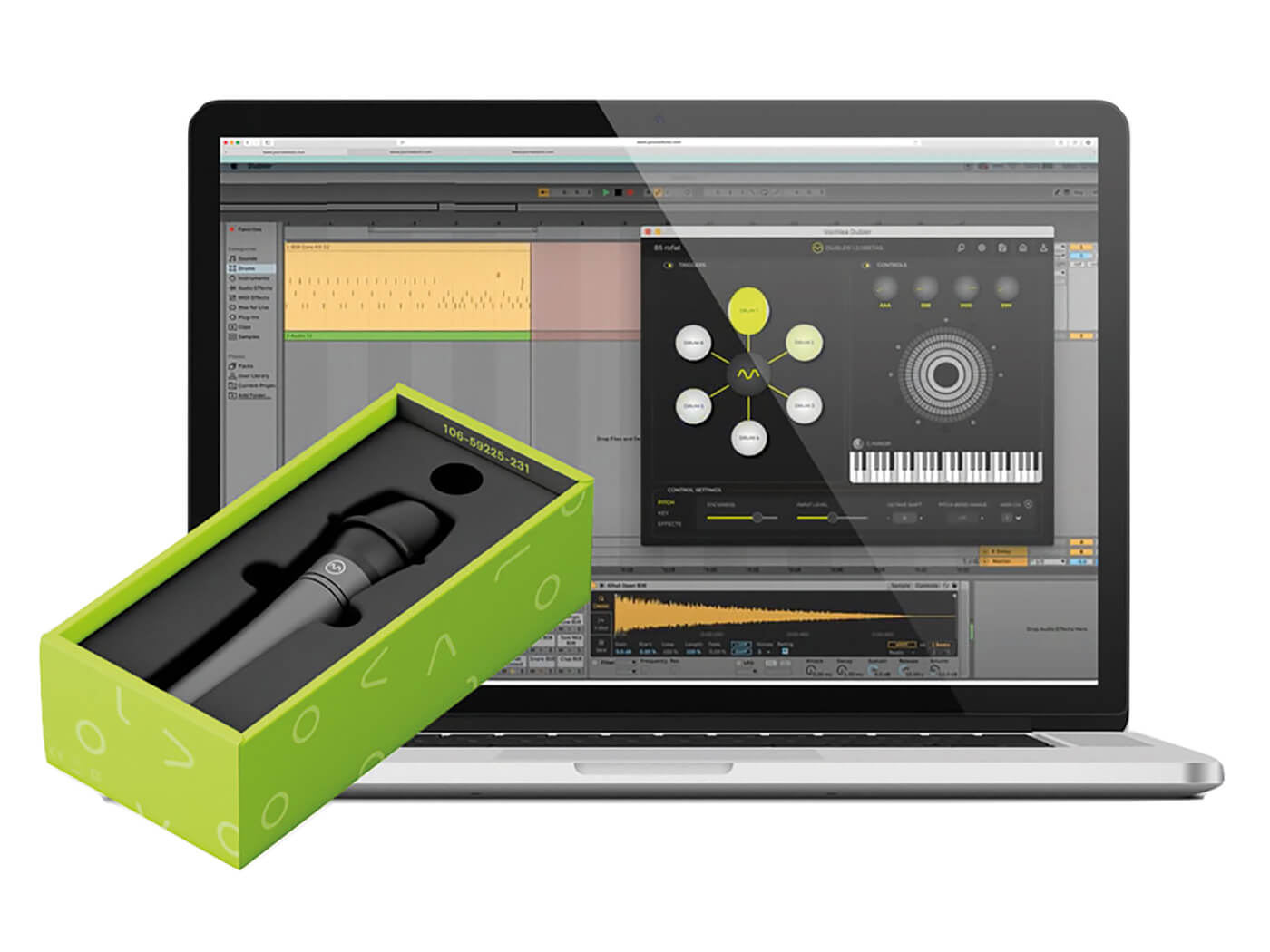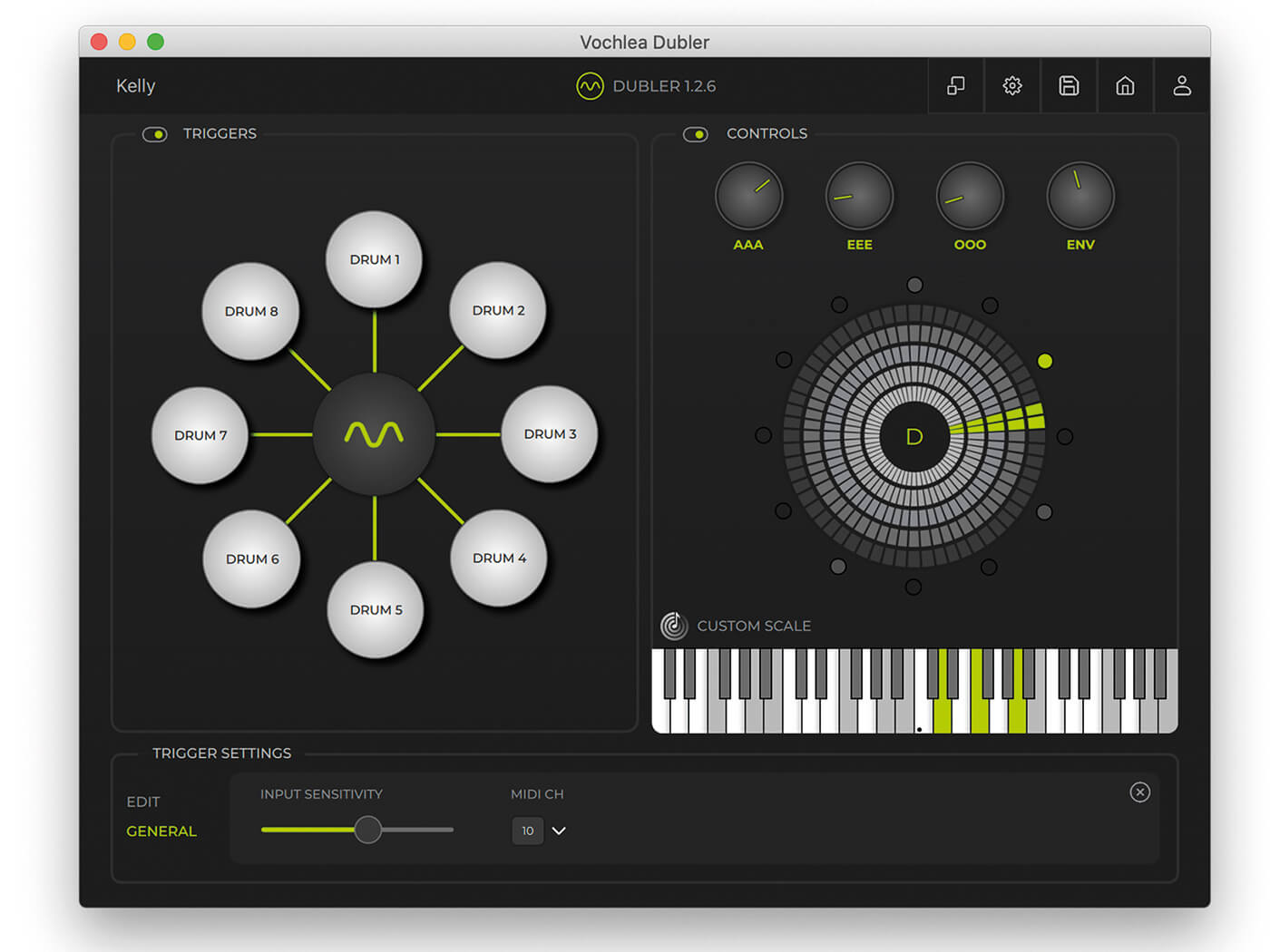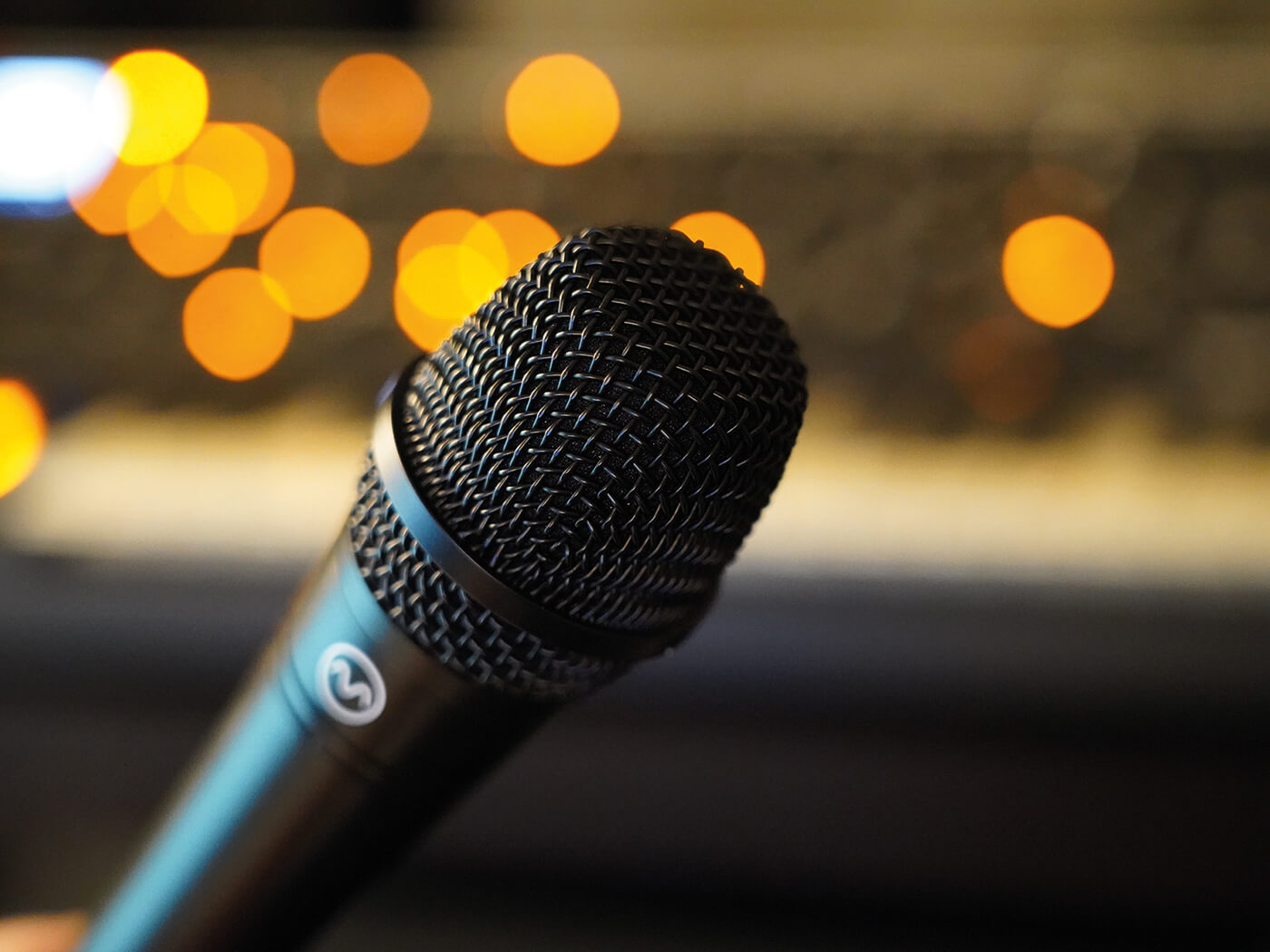Review: Vochlea Dubler Studio Kit
With a promise to unlock your musical ideas, can this live voice-to-MIDI controller manifest the stone-cold bangers we hear in our heads?

Price £259
Contact Vochlea
Virtually every producer has at one stage wanted to realise a brilliant idea but lacked the means to translate it into sound. With the Dubler Studio Kit, British music tech company Vochlea aims to help you quickly turn that idea into reality by giving you voice-to-MIDI control over drums, melodic lines and mappable parameters in your DAW.
The Dubler Studio Kit comprises a USB microphone and a desktop application that converts the incoming audio into MIDI data for triggering sounds in your DAW. The first question that everyone seems to ask is “can’t I just use my mic?” You can—sort of. But we’ll get to that.
Setup is very straightforward, and there are easy-to-follow tutorial videos on Vochlea’s YouTube channel to get you started. This is critical because there are a few settings in your DAW that you might not know to change. After all, Dubler is acting as both a MIDI input device and a control surface.
Beatbox
The two main criteria for assessing any audio-to-MIDI system, particularly one that involves live tracking, are latency and triggering accuracy.
For drums, triggering is impressively fast. Any latency when using the Dubler USB mic is virtually imperceptible. And that’s the caveat. While you can set your own mic as the input device for Dubler, this latency doubles when using a regular mic plugged into an interface, even with a DAW buffer size of 32 samples.
In the Triggers mode, Dubler can interpret up to eight different trigger sounds. You can assign these to any musical key but starts on C1 by default to trigger a kick drum. To define each trigger sound, you need to train the software. This is as simple as making that noise into the mic a few times. The clean UI makes this is highly intuitive.
You’ve got to make sure that you define sounds that are different enough that you don’t cause mistriggers. It’s a good idea to keep a glass of water close by because refining your beatboxing style can be thirsty work, and when your mouth is dry, you won’t make such distinct sounds.

To get the most out of Dubler, you’ll also want to record a bit of yourself beatboxing to understand what sounds you actually make when beatboxing rather than the sounds you think you make. Our first attempts failed pretty miserably. By starting with just three elements: ‘boo’, ‘ti’ and ‘ka’ sounds, we had much greater success and could snappily turn out some drum and bass breaks. It turns out that the ‘ti’ and ‘ts’ sounds that you might reasonably expect to work for closed and open hi-hat triggers are too similar and can confuse the Vochlea engine.
If beatboxing isn’t your thing, you can train the drum triggers to respond to claps, chest-beating, finger clicks and any other distinct sound. Making the sounds different is critical for avoiding mistriggers, and this saves time in MIDI editing later.
Once you begin recording drums in your DAW, the results are very useable, especially if you keep the number of triggers to a minimum. No matter what your sound source is, you’re unlikely to trigger the right drum all of the time. But, that’s more to do with the consistency of playing/beatboxing than the software. We also had several double triggers early on but fixed these with the Input Sensitivity control.
The fantastic thing about Dubler is how well the drum triggers track velocity. You can bring life to drum parts quickly, especially closed hi-hats. And if you want your kicks and snares to land consistently, you can disable Velocity Control on each drum trigger individually.
Melody maker
Aside from the Triggers mode, the other half of the software is called Controls, and it converts your voice into melodic MIDI pitch data and your vowel sounds into MIDI CC messages that can be mapped to any parameter in your DAW or instrument.
If you can sing in tune, the pitch portion of Dubler is highly effective. If you’re challenged in that area, there are a couple of tools to help, but they take some getting used to. One is the pitch wheel that shows you how close to your intended pitch you’re singing. For example, we noticed a propensity to bend up to notes, which produces the wrong note output. In solving your lousy singing habits, Dubler becomes far more co-operative.
Working in the Chromatic scale isn’t recommended, especially if singing isn’t your strong suit. Instead, you can limit the available notes to minimise MIDI editing. There’s an automatic key detector to determine the notes in your melody, but we preferred creating custom scales. In our tests, the pentatonic scale worked beautifully, with just the right amount of space between notes to reduce unwanted note-hopping.
There’s also a Stickiness parameter that dictates how easily Dubler will switch to the next note. As helpful as Stickiness is for less confident singers, it comes at the cost of latency, and rapid melodic sections suffer when it’s engaged. And on that point, latency is unsurprisingly much higher for melodic pitch-tracking than for drum triggers.
When you’re in a scale, you can also engage the Chords function which triggers simple triads based on the sung note. This is useful, but having options for chord extensions would significantly improve the experience.
Where Dubler gets particularly exciting is with the inclusion of pitch bend. It adds an entirely different dimension of humanisation. With a bend range of up to 48 semitones, Dubler can track precisely the melody you’re singing. It captures all the swoops and bends of the human voice and when connected to a virtual instrument creates an eerie singing synth sound. The only downside is the amount of MIDI pitch bend data that you’ll have to tidy up, but if you can handle that, the payoff is enormous.
You can also use an instrument to trigger the note data. We found both acoustic and electric guitars were capable of more accurately triggering notes than the voice.
Throwing in the vowel
The final part of the picture is the ability to convert vowel and level information into MIDI CC data. In theory, you can map the AAA, EEE, and OOO vowel sounds to any parameter. However, mapping the AAA vowel parameter to filter cutoff was the most immediately satisfying, turning wah-wah imitation singing into something that could pass for music.
This is the most intriguing extension of the singing synth concept. And, alongside the full octave pitch bend gives you the ability to control your virtual and electronic instruments in more expressive ways than ever. The parameter mapping is easy to do, but the generated values for vocals and the overall volume (ENV), which can also be mapped, isn’t always the most predictable. In addition, while you can set minimum and maximum values for each parameter within your DAW, it would be great to have this option visually in Dubler.
The vowel and envelope to MIDI CC conversion is such a fun concept that it would be great to have an easily accessible mode in Dubler that sends only CC data and not MIDI note data.
Trigger happy
Because you can set Triggers and Controls to use different MIDI channels, it is possible to control a drum part and play a melodic instrument all with your voice. Considering how much concentration Dubler took to use even moderately well, this is a use case that is only for advanced beatboxer/vocalists.
Dubler is undoubtedly an excellent controller for triggering and recording drum parts. And, the vowel-based control is loads of fun. However, the notion that it can unlock your musical ideas suggests that using Dubler would be easier or faster than just playing a controller keyboard. Once you weigh up the amount of time required to edit the MIDI data, you might find that you were better off figuring out how to play the part you imagined on a pad or keyboard controller.
Whether you’re a keyboardist or not, though, Dubler will help you create music that you might not otherwise have been able to make.
Do I really need this?

There are several live audio-to-MIDI conversion systems out there but none that match Vochlea’s drum trigger performance. The included USB mic, incredibly, also makes a marked difference to the low latency performance of the package. The addition of mappable vowel-controls makes Dubler a unique product and one that can be a lot of fun to use. And, the more time we spend with it, the more we’ve enjoyed it. The question is, how much do you mind editing MIDI data? If the answer is not at all, you’ll love Dubler. If you can play keys, and you don’t love heavy MIDI editing, this probably isn’t for you.
Alternatives
imitone
imitone Studio $75 (£56)
This beta software has been in development since 2015 and contains the melodic portion of Dubler. It claims to have the fastest pitch-tracking technology available.
OVox has MIDI out for triggering other virtual instruments with your voice, but it’s also got a comprehensive suite of vocal resynthesis tools and synths.